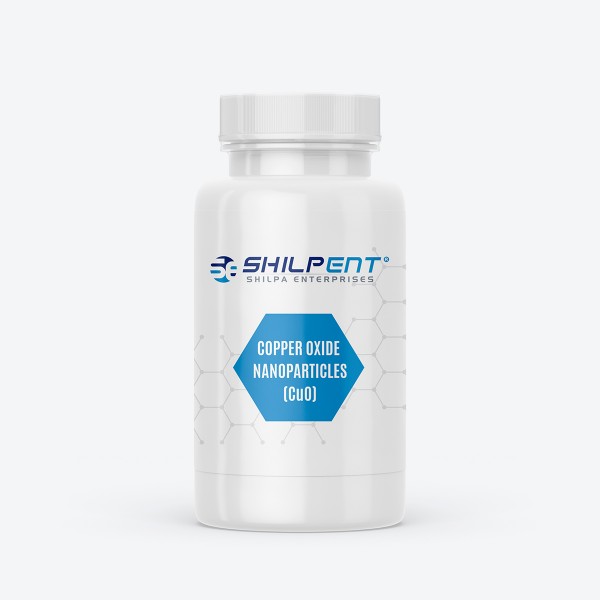
Silicon Dioxide Nanoparticles
Description and Specifications of Silicon Dioxide Nanoparticles Silicon Dioxide Nanoparticles, or silica nanoparticles, is super-small structures made from silicon and oxygen atoms. It is much...



Copper Oxide Nanoparticles (CuO) is a tiny copper oxide particle also known as Copper Oxide Nanopowder. It is round and has a lot of surface area. When heated, this powder can turn into copper when exposed to hydrogen or carbon monoxide. Copper oxide is a unique metal that can conduct electricity. It also has interesting properties, such as its interaction with light and magnetism. We use copper oxide in different ways. It helps make supercapacitors, filters, and storage devices. It can also be used in sensors and semiconductors.
Copper Oxide Nanoparticles (CuO) is used by scientists and researchers in many ways. It can be a catalyst, sensor, or antimicrobial agent. It can be used in cosmetics, electronics, and energy storage. Scientists are studying how it can help with cleaning and farming.
It has many benefits, like speeding up reactions, finding gases and pollutants, killing bacteria and fungi and storing energy. Because it is small and has a big surface area, it can react easily and is useful in many ways.
We're more than just a manufacturer and supplier of Copper Oxide Nanoparticles. We're partners in our client’s success. We have small particles that come in various sizes, shapes, and surface treatments for our customers. We'll understand our client’s needs and goals. Then, we'll recommend suitable nanoparticles for the job. We promise to give our clients great prices and help them reach their goals. Contact us today to learn more.
6 other products in the same category:
Description and Specifications of Silicon Dioxide Nanoparticles Silicon Dioxide Nanoparticles, or silica nanoparticles, is super-small structures made from silicon and oxygen atoms. It is much...
Details and Specifications of Magnesium Oxide Nanoparticles Magnesium Oxide Nanoparticles (MgO) is a chemical compound of magnesium and oxygen atoms. They are incredibly tiny particles. These...
Details and Specifications of Titanium Dioxide Nanoparticles Titanium Dioxide Nanoparticles (TiO2 NPs) is incredibly tiny particles with a size of under 100 nanometers. It is a naturally occurring...
Details and Specifications of Iron Oxide Nanoparticles Iron Oxide Nanoparticle, or IONPs, is tiny particles of iron oxide. Iron Oxide Nanoparticles is so small that it cannot be seen without a...
Details and Specifications of Aluminum Oxide Nanoparticles Aluminum and oxygen atoms combine to form aluminum oxide nanoparticles. It is also referred to as alumina nanoparticles. It belongs to the...
Description and Specifications of Zinc Oxide Nanoparticles Zinc Oxide Nanoparticles is also known as ZnO nanoparticles or Zinc Oxide Nanopowder. It is tiny particles of Zinc Oxide with diameters...